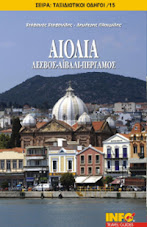Cologne to Brussels
I had no idea Brussels was so close to Cologne. It's just two hours and fifteen minutes by train or car. A last-minute train ticket would have cost 107€.
Train from London
If you're visiting Brussels from London, travel just got a whole lot faster on Eurostar. Beginning on November 14, the new high-speed train service from St. Pancras International Terminal to Brussels will cut travel time down from two hours and 45 minutes to just one hour and 51 minutes! For more information, log on to RailEurope.com.
Brussels
Belgium boasts that they are home to 400 beers, 2,200 chocolate shops and 35 UNESCO sites. Well, you can find most of these claims to fame in the country's capital city, Brussels. Brussels is the center of Belgium. The name Brussels is derived from the old Dutch word "bruocsella" which means: "marsh (bruc) home (zele)" or marshland, which the area once was. The official languages of Brussels are French and Dutch, though French is much more widely used here. Many speak German and Flemish (a Dutch dialect) as well. Brussels (or Bruxelles in French), has an area of 62 square miles (161 square kilometers) and the population is just over one million. Throughout the years, Brussels has been subject to many rulers; the French, Spanish, Austrian and Dutch, for example. The country's history is long and varied, far too detailed to recount here, but if you're interested in more information, click here.
Weather
When's the best time to visit Brussels? The city gets a lot of rain all year round. But with their mild, maritime climate it rarely gets really cold. The period from November to March has the coldest weather, with temperatures ranging from about 4° to 7°C. But if you hate crowds, this is also when there are fewer tourists than usual and cheaper prices. The hottest months are July and August as the highs average around 22°C. But even when the weather is horrible, there's still a lot to see indoors. There are tons of shopping arcades and over 100 museums. One of those is The Belgium Center For Comics Strips. Comics are very popular here. The most famous are TinTin and The Smurfs.
Grand'Place
Just a few blocks away from Le Dixseptième is Brussels' jaw-dropping, spectacular Grand'Place. Brussels is beautiful and intriguing but much of what I saw was nothing out of the ordinary, at least not by European standards. But the moment I walked down an unassuming alley, following the music filling the air, I felt as if I had traveled back in time. Oh my gosh: If this square is not one of the grandest places I've ever laid eyes upon, I don't know what is. Grand'Place dates back to the 12th century. In the mid-14th century, it was Brussels' most popular marketplace. In 1695, King Louis XIV of France bombed the area and destroyed all but one of the original buildings. That building was Town Hall, which is still today, the seat of the Mayor of Brussels and can only be visited on a guided tour. All the other Guild Houses were rebuilt in four years. Those 17th-century replacements still stand today and are more than sufficient for impressing me and the hoards of gawking tourists. Free concerts take place here every weekend, all day and most of the night; watch the video below and you'll see what I mean. I didn't eat or drink at any of the surrounding restaurants and cafes but they do offer up front row seats and prices that match!
Manneken Pis
One of the buildings in the Grand'Place, the Bread House ("Broodhuis" in Dutch) stores Manneken Pis' 700 costumes, as well as the original Manneken Pis stone statue, which is three times the size of the bronze statue you'll see on the street for display today. If you have no idea what the heck I'm talking about, that's okay. I had no clue either until my guide gave me the lowdown. Manneken Pis is the symbol of Brussels. Who would ever have thought that a statue of a little boy peeing would become a symbol of the city? In the mid-14th century, Manneken Pis was first carved in stone and called Little Julian. In 1619, a bronze version of the boy was made. There are several legends behind the history and importance of the statue. According to one such legend, this has become a symbol of Brussels because he's a freedom fighter; a rebellious little boy who also conveys the humor of the people of Brussels. You wouldn't believe the crowds that line up to see this kid! He's behind a gate because he's been kidnapped several times, most recently by students in the 1970s. One special day in November, the boy pees beer. And on many occasions he's dressed in costume.
Tour Guide
Since I was in Brussels for just 24 hours and I didn't have any Belgian friends to show me around, I hired a tour guide for a three-hour tour. Mrs. Annelies Claes (Tel: 0473-76 93 93, AnneliesClaes56@yahoo.com) was recommended to me by the Belgian Tourism Board and her rate is a reasonable 95€. Plus, the price is good for up to 25 people! We explored the city by foot and I saw everything from the old Roman wall to designer shops. I learned that Brussels' colors are red and green, just like Christmas, and that there's always something to do in this city. Heck, right next to my hotel there's a Grass Market every weekend. They don't sell grass but it got its name because they used to sell veggies that only grew above ground, like cabbage. Today, they sell mostly knick-knacks to tourists and local delicacies like escargot.
Royal Palace of Brussels
We took a quick tour of the Royal Palace of Brussels. Entry is free from July to September and at no time are cameras or bags allowed inside; visitors can take advantage of the free bag-check. The palace is unbelievably grandiose. The mirror room has a shiny green ceiling that it turns out, is covered with the wings of 1.4 million Thai jewel beetles! How utterly bizarre and opulent at the same time. FYI: When the palace flag is hoisted, the King is in the country, though not necessarily in the building.
Churches
I didn't have time to tour the Basilica of Holy Hearts in Koekelberg, which dominates the skyline. However, I found out that it's the fifth largest Catholic church in the world and was built between 1920 and 1970. I learned that 75% of Belgium is Roman Catholic and that the most esteemed church in Brussels is the St. Michael and Gudula Cathedral in Treurenberg hill. St. Michael and Gudula are the patron saints of the city. The cathedral's history began in 1047 and in the 13th century, it was renovated in its present-day Gothic style.
Dining
Sightseeing makes me tired and hungry. Lucky for me, Brussels serves food from all over the world and has something to suit every budget. When Annabelle and I first arrived, we had sandwiches for lunch by the hotel. The most popular place appeared to be De Pistolei. Annabelle waited in line there and similar to Subway, she got to choose what she wanted on her sandwich (cost: 4€). Her baguette was so fresh that I was sorry I didn't wait in that line. Instead, I went next door to Belgian Frit 'n' Toast and had a mediocre Mediterranean sandwich with French fries for 6.40€.
Mussels in Brussels
The most sought after dish on any dinnertime menu is moules-frites, mussels with fries. Mussels are the national dish of Belgium. Most come from the North Sea and they are in season from September to February. I'm not a huge seafood fan but I did want to try them so I was stoked when Annabelle ordered a pot for dinner at Chez Leon. Chez Leon has been in business since 1893 and has to be Brussels' biggest and most popular restaurant. I later read that they serve half a ton of mussels a day! No wonder the place is so huge and completely packed. We scored a table outside, along the narrow cobblestone street near Grand'Place. There are a variety of mussel recipes but traditionally, they are made with white wine, shallots, parsley and butter and served in a large, steaming pot with a side order of Belgian frites and mayonnaise (17€). The method for eating them is to use an empty shell as a rudimentary but effective pair of tweezers, to pull the slimy creature out of its shell. I ate at least four of these bad boys and they were damn good! For non-seafood lovers, I recommend the turkey fricassee in raspberry beer (14.25€). Chez Leon, rue des Bouchers 18.
Dessert
There are chocolate shops on every corner. Godiva was founded here in 1926 but I didn't bother going into this universal store. Instead, I opted for a visit to Pierre Marcolini's and Wittamer's shops. Between them, they (supposedly) make the best chocolate in Brussels. They are not cheap and their finished products almost look too good to eat. As if that weren't enough, you can't walk 30 feet without spotting or smelling someone selling those Belgian waffles, famous the world over. In the 24 hours I was there,
(πηγή: www.frommers.com)
24 ώρες στις Βρυξέλες
Ετικέτες Βέλγιο
Εγγραφή σε:
Σχόλια ανάρτησης (Atom)











Δεν υπάρχουν σχόλια:
Δημοσίευση σχολίου